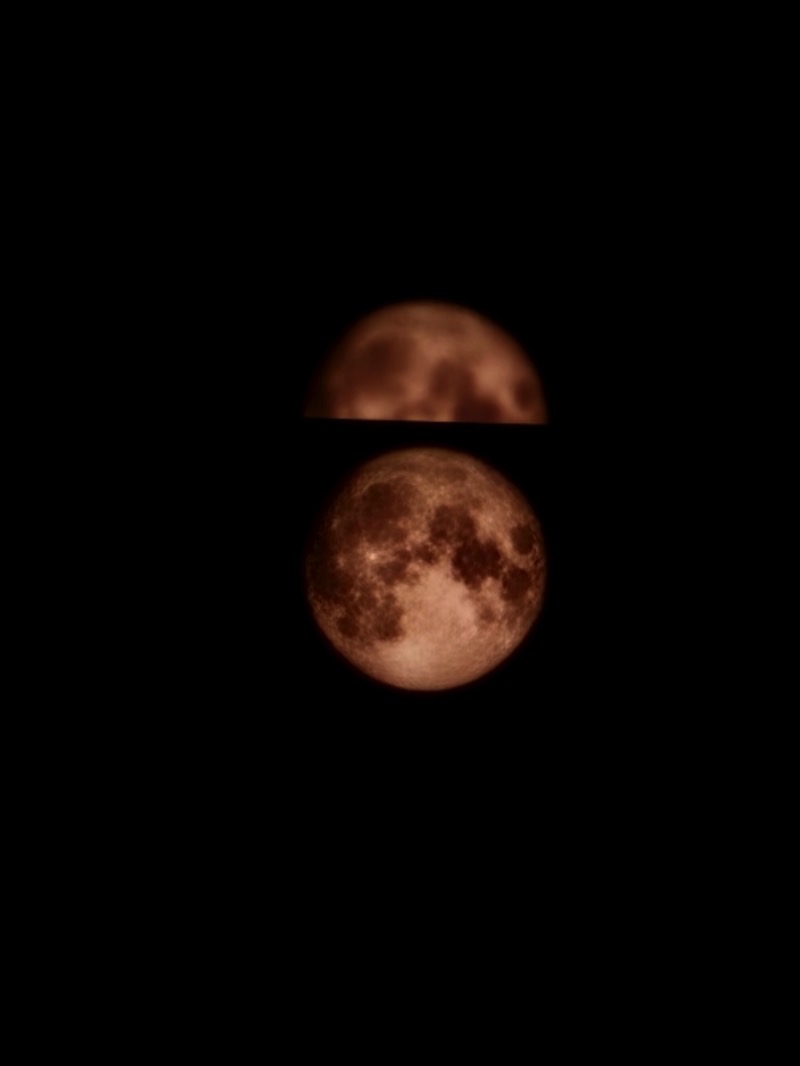Nightography is one of the selling points of the Galaxy S23 Ultra and the entire S23 series. In recent years, all smartphone makers have been on a crusade to improve low-light photography, Samsung included. And Samsung has been using photos of the moon that were seemingly shot with devices like the Galaxy S23 Ultra to prove its point.
It turns out, however, that Samsung might have been lying to us all along. The photos of the moon look too good to be true because they are supposedly not real. Samsung might use artificial intelligence (AI) and machine learning (ML) to detect the moon in shots and then place an overlay on top of the image you shoot. The result is supposedly a gorgeous moon photo that’s simply not real.
A Redditor created a simple experiment that anyone can repeat to show that the moon pics they shoot with their Galaxy S flagship aren’t real.
A Redditor who is aptly named ibreakphotos is the person behind the accusations. The user’s extremely detailed post went viral, as he offered several camera samples to prove his point.
He started by downloading a high-resolution photo of the moon. Then, he downsized it to 170 x 170 pixels and applied a Gaussian blur, removing all the detail from the picture. Therefore, you shouldn’t be able to capture a great moon photo when pointing a Galaxy S23 Ultra at it.
The Redditor put the photo on his monitor, turned off the lights, and moved to the other side of the room. Zooming in on the monitor with his Samsung phone, he got a perfect moon photo. Despite the blur, the Galaxy S phone somehow pulled off an amazingly detailed moon image.
This side-by-side image shows the Redditor’s source picture as well as the photo that was captured by his Galaxy S phone:

The only plausible explanation is that Samsung is faking it with a smart algorithm. The Redditor explains:
In the side-by-side above, I hope you can appreciate that Samsung is leveraging an AI model to put craters and other details on places which were just a blurry mess. And I have to stress this: there’s a difference between additional processing a la super-resolution, when multiple frames are combined to recover detail which would otherwise be lost, and this, where you have a specific AI model trained on a set of moon images, in order to recognize the moon and slap on the moon texture on it (when there is no detail to recover in the first place, as in this experiment). This is not the same kind of processing that is done when you’re zooming into something else, when those multiple exposures and different data from each frame account to something. This is specific to the moon.
The Redditor goes on to say that “the moon pictures from Samsung are fake. Samsung’s marketing is deceptive.”
It is adding detail where there is none (in this experiment, it was intentionally removed). In this article, they mention multi-frames, multi-exposures, but the reality is, it’s AI doing most of the work, not the optics, the optics aren’t capable of resolving the detail that you see. Since the moon is tidally locked to the Earth, it’s very easy to train your model on other moon images and just slap that texture when a moon-like thing is detected.
The Redditor did another experiment to prove his point. He photoshopped one moon photo next to another to see if it would fool the AI into only applying the overlay on one of them. Sure enough, that’s exactly what appears to have happened. Here’s the resulting photo:

The Redditor doesn’t mention which phone he used to prove Samsung’s moon photos are fake. But a different Redditor did the same thing a couple of years ago.
Moreover, well-known Samsung insider Ice Universe says Samsung’s fake moon photos aren’t surprising. Before deleting his tweets related to the moon controversy, he provided examples of the Galaxy S23 Ultra employing the moon-enhancing algorithm.
The ball is in Samsung’s court now. It’ll have to prove that the moon shots it takes with the Galaxy S23 Ultra and other flagships are real. Otherwise, it’s going to have some serious explaining to do. This wouldn’t be an issue if Samsung made it absolutely clear from the start that its moon shots are enhanced. The Galaxy S23 Ultra is a great camera without any of these tricks. It doesn’t need to take fake moon photos that only ruin Samsung’s reputation.








